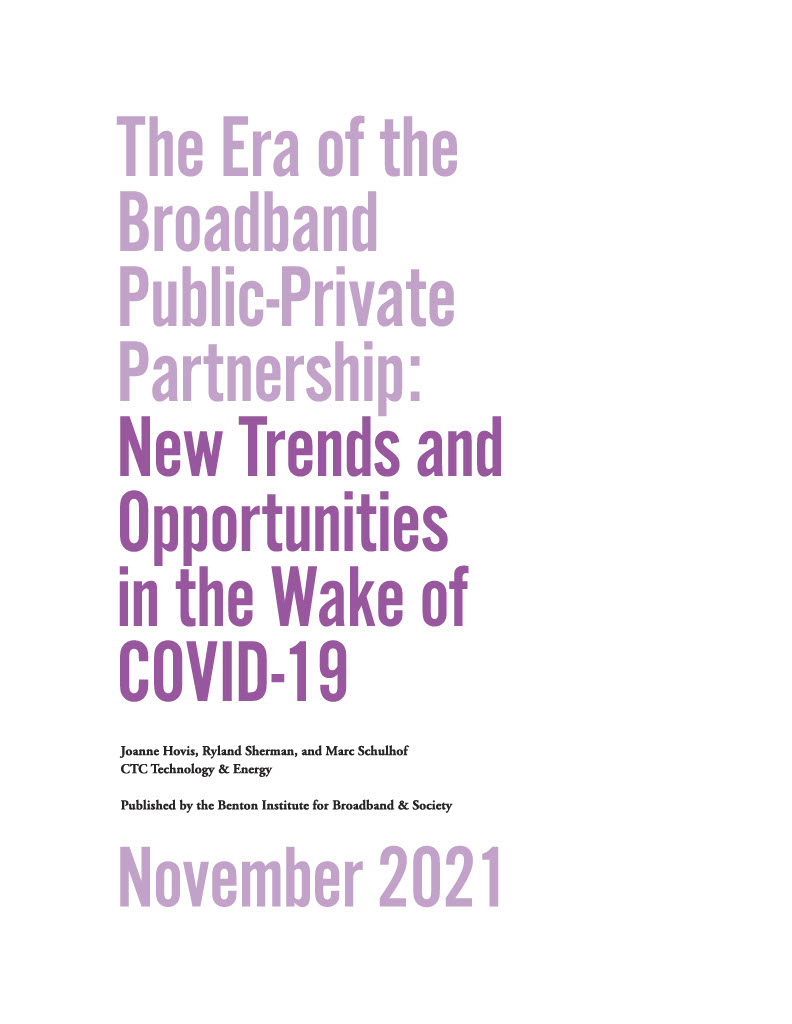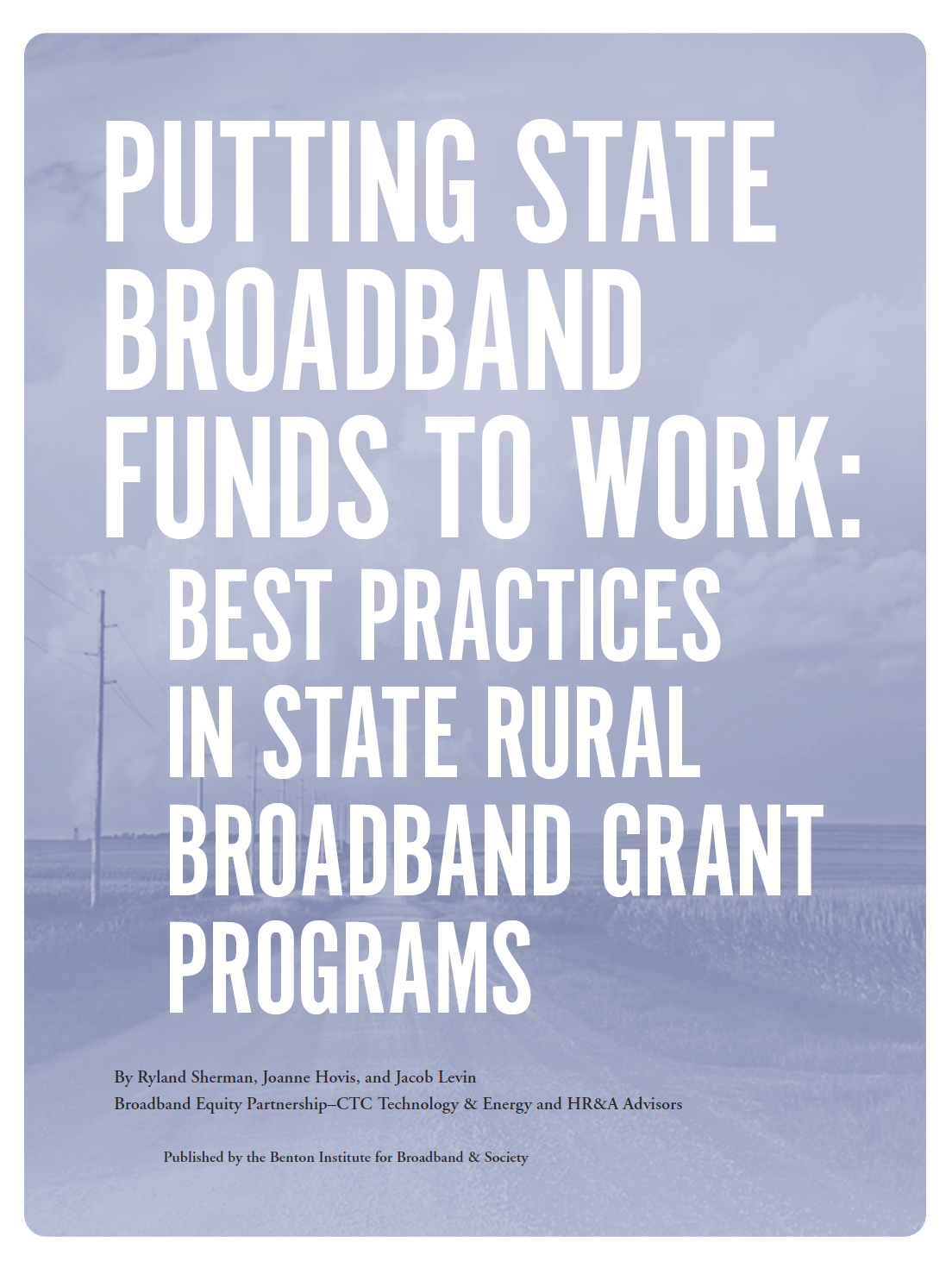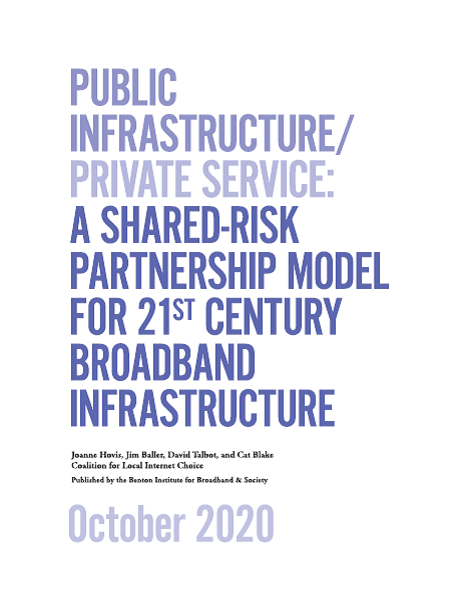Joanne Hovis
The Era of the Broadband Public-Private Partnership
A remarkable wave of public-private collaboration in broadband is underway—a wave that began in the early months of the COVID-19 pandemic and will likely reach a crest in the next few years as many tens of billions of dollars of public and private capital are invested in next-generation broadband. COVID-19 demonstrated to American policymakers the absolute need for plentiful connectivity and the crises faced by those who don’t have it—and simultaneously demonstrated to private investors the economic potential of best-in-class, future-proof broadband.
States Organize to Facilitate and Fund Local Broadband Efforts
Over the past decade, a range of states have developed and executed strategies to methodically chip away at rural broadband challenges.

How Can America’s Communities Secure the Benefits of Fiber-Optic Infrastructure?
How can America’s communities secure the benefits of fiber-optic infrastructure? Our answer is that local governments need not accept a binary option of waiting for the private sector to solve the problem—which the private sector already would have done if it made business sense—or taking on the challenge entirely as a public enterprise. Rather, public-private collaboration can disrupt this binary and give communities options.
It is the era of the broadband public-private partnership.

The best practices and commonalities among many of the best state rural broadband funding program


Public Infrastructure/Private Service Model For 21st Century Broadband Proves Worthy
The emerging model presents a scalable option for communities that lack the expertise or interest to operate networks or act as ISPs themselves but want to own and control the core communications assets in their communities as a means of securing the benefits of broadband internet. Here’s a look at the model’s business case, technical elements and risks.
Public Infrastructure/Private Service: A Shared-Risk Partnership Model for 21st Century Broadband Infrastructure
The Public Infrastructure/Private Service model puts the locality in the business of building infrastructure, a business cities and counties know well after a century of building roads, bridges, and utilities. The model leaves to the private sector most aspects of network operations, equipment provisioning, and service delivery. The Public Infrastructure/Private Service model leverages the best capabilities of the public and private sectors.
Private-sector investment alone is not closing our digital gaps. The Public Infrastructure/Private Service model offers a promising solution that is precisely targeted to the areas with greatest broadband gaps, frequently those with lower income levels and lower population densities.

The Broadband Lifeline in a Pandemic: How Your Community Can Quickly Connect the Unconnected
Many communities have thrown up their hands because there are no LTE hotspots to be found on the market (the supply delay is many months at this point) and because network construction seems like it could take years. It’s important to know that you have options to deploy new facilities – options that can be exercised in days or weeks, not years. Earlier, we shared some ideas for using fiber, mmWave, and Wi-Fi to get services to the unserved.
The Broadband Lifeline in a Pandemic: How Your Community Can Quickly Connect the Unconnected
As the nation prepares to ride out a pandemic that will persist for months, the need is acute for fast and inexpensive broadband rollout. It’s important to know that you have options to deploy new facilities – options that can be exercised in days or weeks, not years. Last week, we shared some ideas for using fiber, mmWave, and Wi-Fi to get services to the unserved.

